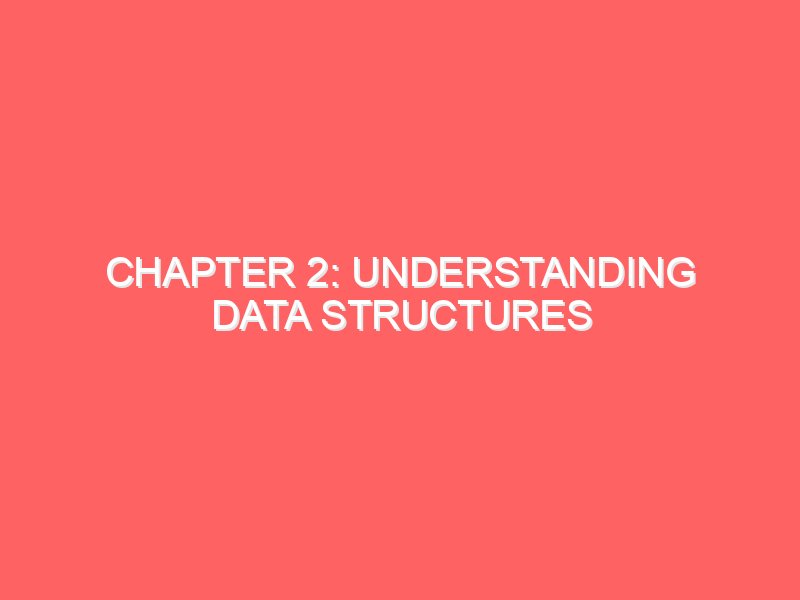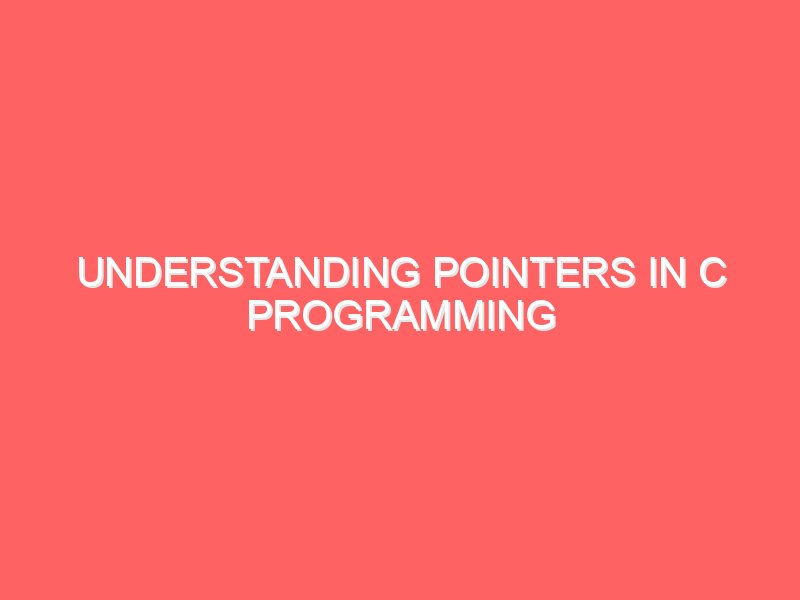Pointers in C are a fundamental concept that every programmer must understand. They provide a way to directly access and manipulate memory, which gives C its reputation for being a low-level and powerful language. Pointers are essentially variables that store memory addresses. By using pointers, you can access the value stored at a particular memory address, modify that value, or even create new variables dynamically at runtime. One of the most common uses of pointers is dynamic memory allocation. In C, you can allocate memory at runtime using functions like malloc() and calloc(). These functions return a pointer to the allocated memory, which you can then use to store data. This allows you to create data structures like arrays, linked lists, and trees, which can grow or shrink as needed. Another important use of pointers is passing parameters by reference. In C, function parameters are typically passed by value, which means that a copy of the parameter’s value is made and passed to the function. However, by using pointers, you can pass the memory address of a variable to a function, allowing the function to directly modify the original value. This can be useful when you want a function to modify a variable’s value and have that change reflected outside of the function. Pointers also play a crucial role in creating and manipulating complex data structures. For example, a linked list is a data structure that consists of a series of nodes, where each node contains a value and a pointer to the next node in the list. By using pointers, you can easily traverse the list, insert new nodes, or delete existing ones. Similarly, pointers can be used to create and manipulate trees, graphs, and other data structures that require dynamic memory allocation and complex relationships between elements. However, working with pointers can be challenging, especially for beginners. They require a good understanding of memory management and can lead to bugs like segmentation faults and memory leaks if not used correctly. It is important to properly initialize and dereference pointers, as well as free allocated memory when it is no longer needed. In conclusion, pointers are a powerful feature of the C programming language that allows programmers to directly access and manipulate memory. They are essential for tasks like dynamic memory allocation, passing parameters by reference, and creating complex data structures. However, they require careful handling to avoid bugs and memory issues. With proper understanding and practice, pointers can greatly enhance your ability to write efficient and flexible C programs. How are Pointers Different from Regular Variables? Pointers differ from regular variables in several ways: Memory Address: Regular variables store values directly, while pointers store memory addresses. This means that a pointer variable contains the address of another variable in memory, rather than the actual value itself. Indirection: Pointers allow for indirection, which means that they can indirectly access the value stored at a particular memory address. This is done by using the dereference operator (*) to access the value pointed to by the pointer. Regular variables do not have this capability. Ability to Modify: Pointers can be used to modify the value of a variable indirectly. By dereferencing a pointer and assigning a new value to it, you can change the value of the variable being pointed to. Regular variables can only be modified directly. Null Value: Pointers have the ability to hold a special value called “null”. This indicates that the pointer is not currently pointing to a valid memory address. Regular variables do not have this capability. Dynamic Memory Allocation: Pointers are often used in conjunction with dynamic memory allocation. This allows for the creation of variables at runtime, rather than at compile time. Regular variables are typically allocated and deallocated automatically by the compiler. These differences make pointers a powerful tool in programming, as they allow for more flexibility and control over memory management and data manipulation. However, they also require careful handling to avoid common pitfalls such as null pointer dereference and memory leaks. 1. Memory Address Regular variables store values directly, while pointers store memory addresses. When a pointer is assigned the address of a variable, it can indirectly access and modify the value of that variable. This concept of memory address is fundamental to understanding how pointers work in programming languages. In computer memory, each byte has a unique address that identifies its location. These addresses are typically represented as hexadecimal numbers, which are easier for computers to work with. When a variable is declared, it is assigned a memory address where its value will be stored. Pointers, on the other hand, are variables that store memory addresses instead of values. By storing the memory address of another variable, a pointer can indirectly access and modify the value of that variable. This is particularly useful when dealing with large amounts of data or when manipulating data structures. Pointers allow for efficient memory management and can greatly enhance the performance of programs. However, they also introduce the possibility of errors such as null pointer dereference or memory leaks if not used correctly. Therefore, it is important to understand how memory addresses and pointers work in order to use them effectively and avoid potential pitfalls. In C programming language, data types are used to define the type of data that a variable can hold. This is important because it determines the amount of memory that will be allocated to store the variable and the operations that can be performed on it. Pointers, like regular variables, also have a specific data type associated with them. The data type of a pointer indicates the type of data that the pointer can point to. For example, if we declare a pointer of type int, it means that the pointer can point to memory locations that store integer values. Similarly, if we declare a pointer of type char, it means that the pointer can point to memory locations that store character values. The data type of a







